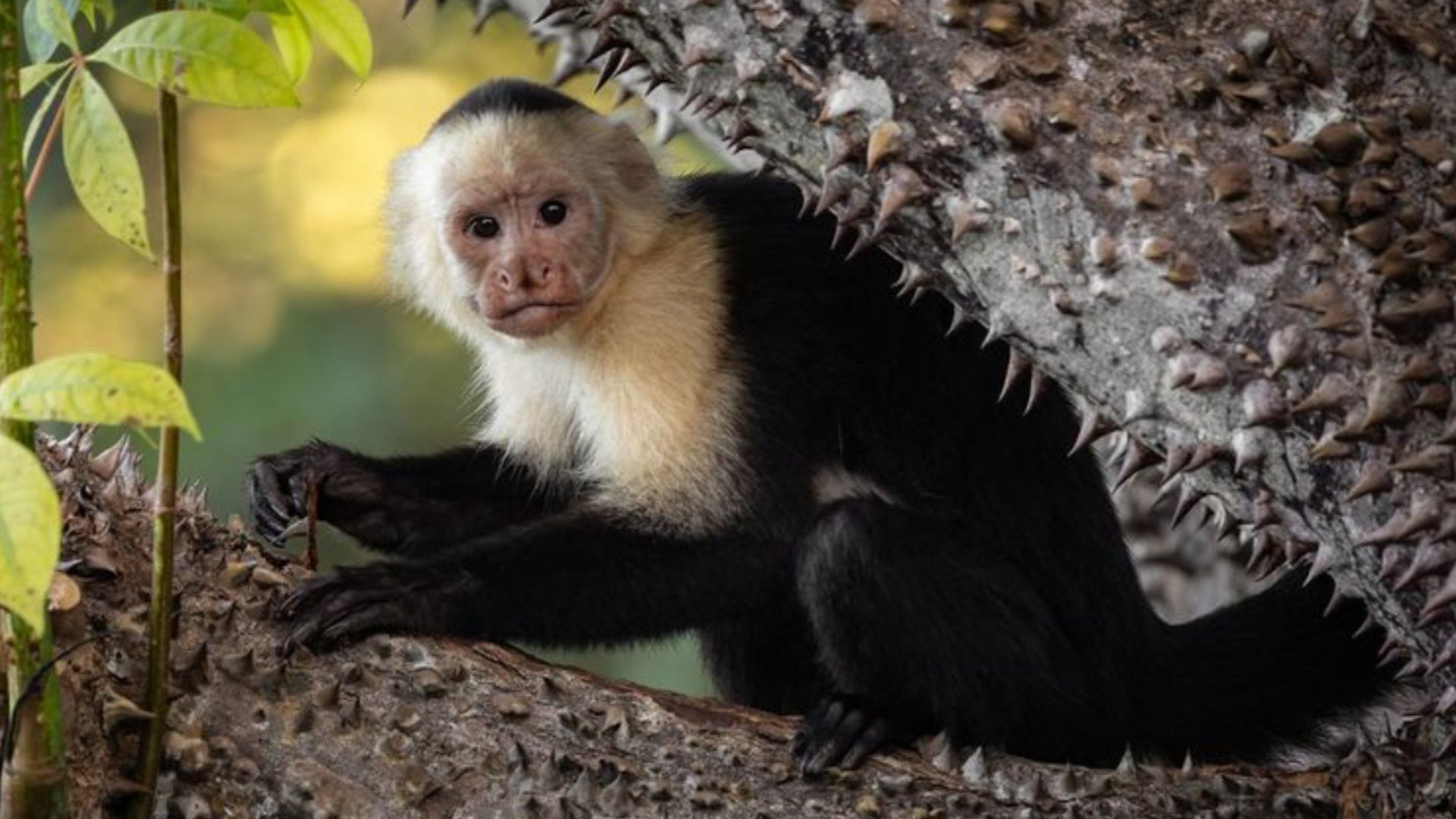The jungle is a thriving ecosystem filled with diverse wildlife, but among its wonders lie formidable creatures known for their intimidating presence.
These jungle bullies, with their fierce demeanor and survival instincts, command respect and caution. Whether it’s their sheer size, stealthy approach, or deadly capabilities, these creatures are best admired from a distance.
Here’s a look at 18 fierce jungle inhabitants that you definitely don’t want to cross paths with.
1. Jaguar
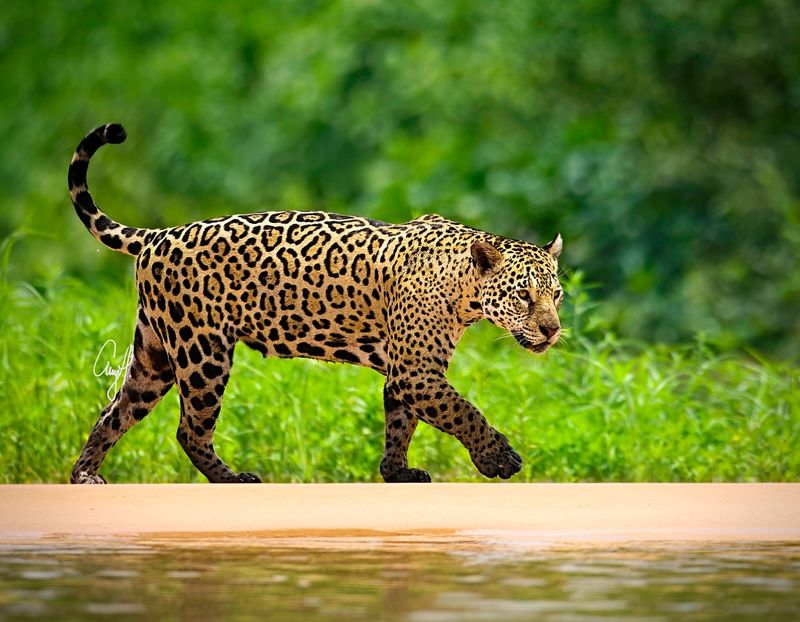
The jaguar is a master of stealth and power. Known for its beautiful rosette-patterned coat, this feline prowls silently through the dense foliage of the rainforest.
Jaguars are solitary creatures, preferring to hunt alone and using their incredible strength to take down prey with a single, powerful bite. These big cats are not just powerful but also incredibly agile, making them adept hunters both on land and in water.
Their ability to swim and hunt aquatic animals adds to their fearsome reputation. Jaguars are opportunistic hunters with a diverse diet, often feasting on deer, capybaras, and even caimans.
Encountering a jaguar in its natural habitat is rare, and while they are not typically aggressive toward humans, it is wise to keep your distance. Respect their territory and observe, if at all, from a safe vantage point.
2. Anaconda
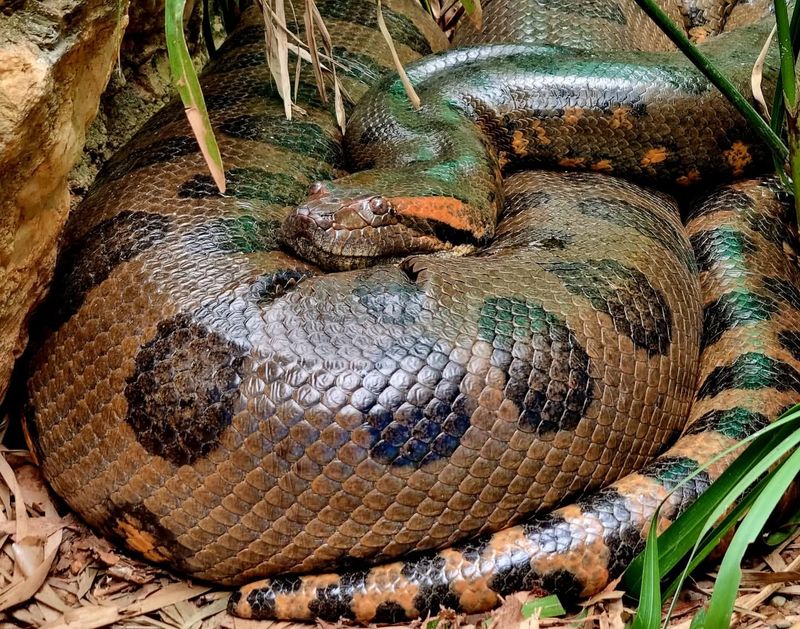
The anaconda is one of the largest and most powerful snakes in the world, making it a formidable force in the jungle. Found primarily in the Amazon and Orinoco basins, these snakes can grow up to 30 feet long and weigh over 500 pounds.
Their muscular bodies allow them to constrict their prey with unmatched strength. Despite their size, anacondas are elusive and often remain hidden beneath the water’s surface, striking with precision when prey comes near.
They feed on a variety of animals, including fish, birds, and mammals, and have been known to take down creatures as large as deer.
While their immense size might be intimidating, anacondas are generally not a threat to humans unless provoked. It’s best to admire these incredible creatures from afar, respecting their role in the ecosystem as top predators.
3. Cassowary
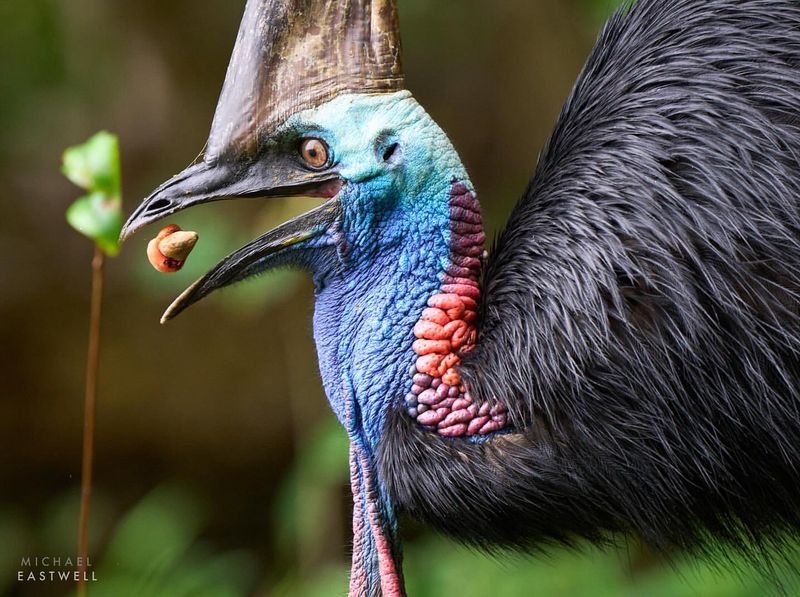
The cassowary, often dubbed the most dangerous bird in the world, is a formidable presence in the jungles of New Guinea and Northern Australia. Known for its vibrant blue neck and helmet-like casque, this bird demands respect.
Cassowaries are flightless birds with powerful legs and sharp claws, capable of delivering lethal kicks when threatened. They primarily feed on fruits, playing a crucial role in seed dispersal within their habitat.
While cassowaries are generally shy, they can become aggressive if provoked or cornered. It’s essential to give them space and remain vigilant when in their vicinity. Observing a cassowary is a unique experience, offering a glimpse into the life of one of the jungle’s most iconic avian residents.
4. Poison Dart Frog
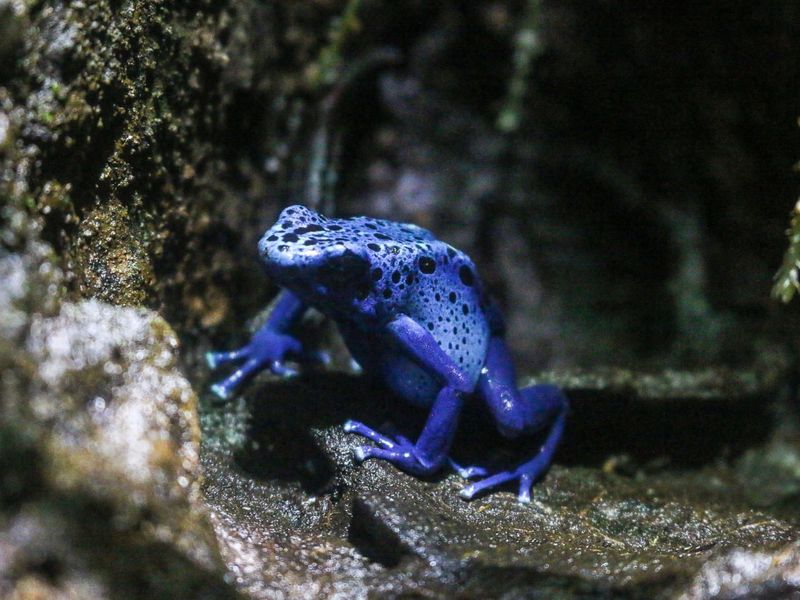
Poison dart frogs are among the most vividly colored and toxic animals in the jungle, a stark warning to potential predators. These small amphibians, often found in Central and South America, boast a dazzling array of colors, from bright yellows and reds to deep blues and greens.
Their bright hues serve as a defense mechanism, signaling their toxicity to would-be attackers. The skin of some species contains potent alkaloid toxins, capable of paralyzing or even killing larger animals.
For humans, these frogs pose no direct threat unless their toxins are ingested. Indigenous tribes have historically used the toxins from certain species to coat the tips of blow darts for hunting.
When observing poison dart frogs, it’s important to resist the urge to touch, as their delicate ecosystem is best left undisturbed.
5. Bengal Tiger
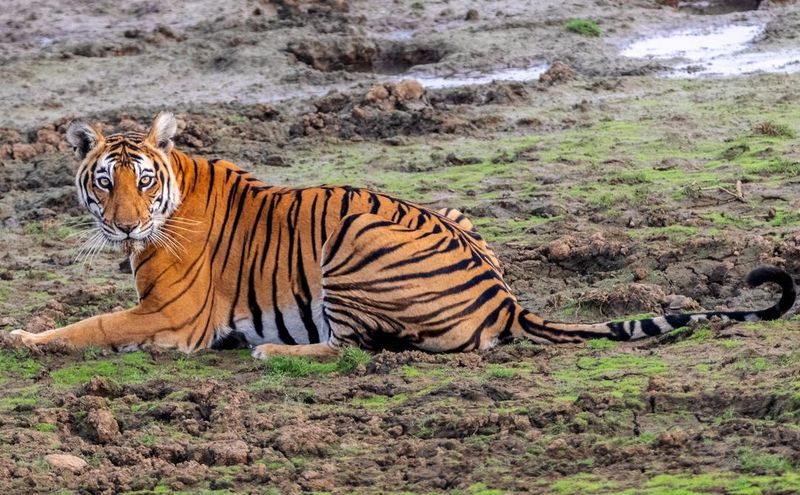
The Bengal tiger, a symbol of strength and grace, is one of the most iconic predators in the jungle. Known for its striking orange coat with black stripes, this majestic feline is a solitary hunter, relying on its strength and stealth to ambush prey.
Bengal tigers are apex predators, preying on a variety of animals, including deer, wild boar, and even buffalo. Their incredible power and agility make them formidable hunters, capable of taking down prey larger than themselves.
While they are not typically aggressive towards humans, encounters with Bengal tigers should be approached with caution. Respect their territory and maintain a safe distance, ensuring both human safety and tiger conservation.
6. Harpy Eagle
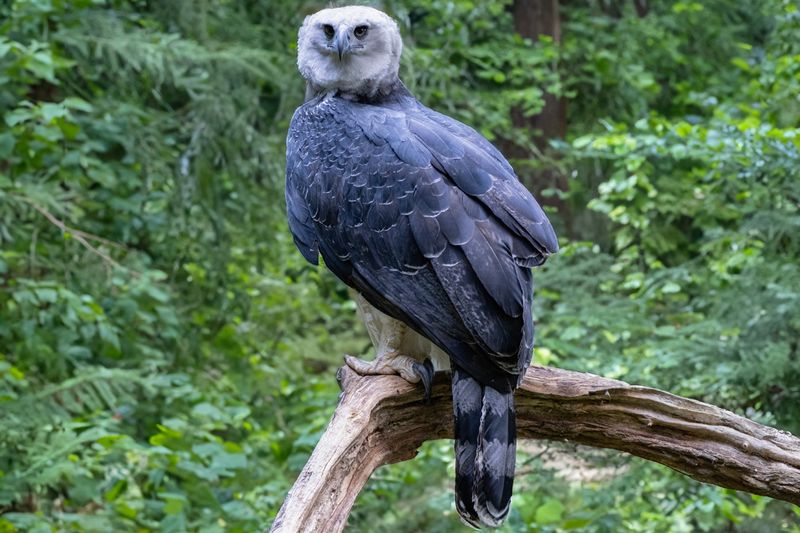
The harpy eagle is one of the most powerful and awe-inspiring birds of prey. With a wingspan reaching up to seven feet, this eagle dominates the skies of the rainforest. It is known for its striking appearance, particularly its large talons and the unique crown of feathers atop its head.
Harpy eagles primarily hunt in the dense jungle canopy, preying on mammals like sloths and monkeys. Their incredible eyesight allows them to spot potential prey from a distance, and their powerful talons ensure a swift capture.
While they are magnificent creatures to behold, spotting one in the wild is a rare treat. Harpy eagles are crucial to the jungle’s ecosystem, controlling prey populations and contributing to the balance of nature. Observing them requires patience and respect for their natural habitat.
7. Capuchin Monkey
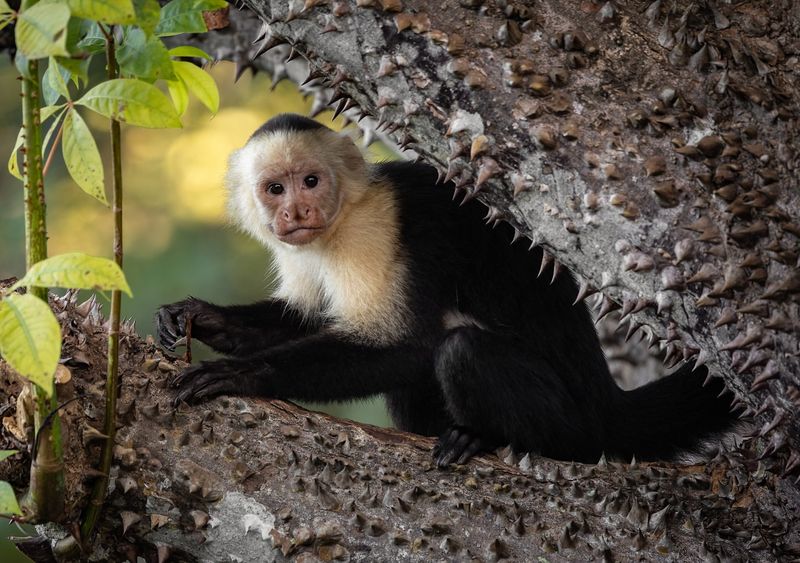
The capuchin monkey, known for its intelligence and curiosity, is a lively resident of the jungle canopy. These small primates are highly social and often seen in large groups, communicating with a series of vocalizations and gestures.
Capuchins are skilled foragers, using their dexterous fingers to extract insects, fruits, and small vertebrates from their environment. Their ability to use tools, such as rocks to crack open nuts, further highlights their cunning nature.
Though they are not physically intimidating, capuchin monkeys can be mischievous bullies, particularly when it comes to food. They have been known to raid crops and steal from humans, showcasing their boldness and adaptability.
8. Giant Otter
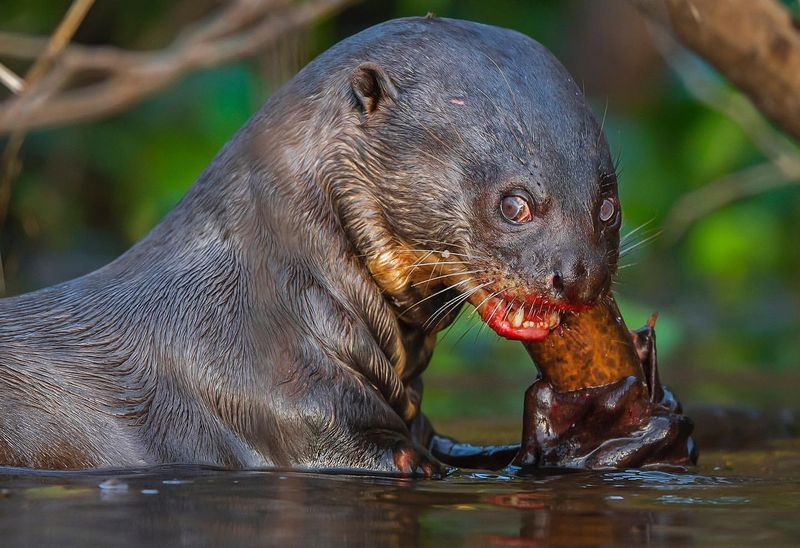
The giant otter, known as the “river wolf,” is a social and playful mammal found in the waterways of the Amazon basin. These otters are the largest of their kind, reaching lengths of up to six feet, and are known for their sleek bodies and agile swimming abilities.
Living in cohesive family groups, giant otters communicate through a variety of vocalizations, establishing territories, and coordinating hunting efforts. Their diet consists mainly of fish, but they are also known to hunt small caimans and anacondas.
Despite their playful demeanor, giant otters are protective of their territories and can fiercely defend against intruders, including humans. When observing these fascinating creatures, it’s important to respect their space and enjoy watching their cooperative behaviors from a distance.
9. Black Caiman
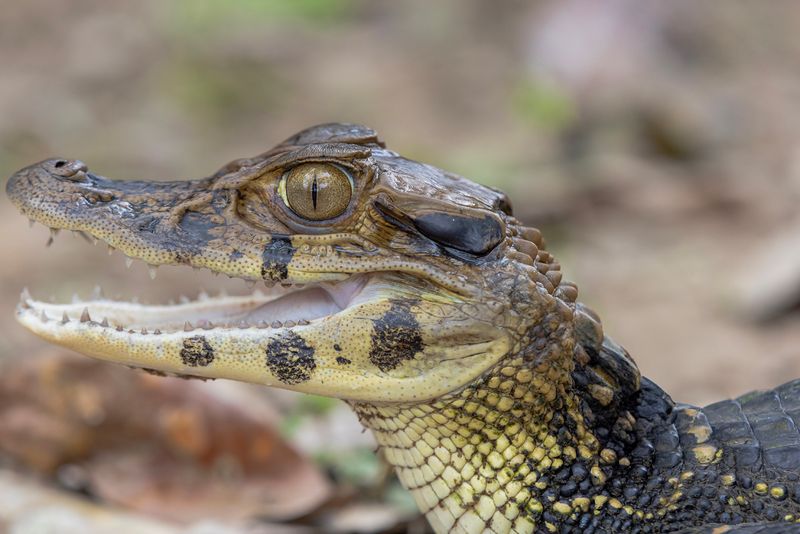
The black caiman is one of the largest and most feared predators in the Amazon River basin. Resembling a formidable alligator, this reptile can grow up to 20 feet in length and boasts a powerful set of jaws capable of crushing prey with ease.
Black caimans are apex predators, feeding on a variety of animals, including fish, birds, and mammals. They play a critical role in the ecosystem, maintaining the balance of species in their environment.
While they are not typically aggressive towards humans, black caimans should be approached with caution. Their stealth and power make them formidable hunters, and it’s best to admire these impressive creatures from a respectful distance, particularly when near water.
10. Bullet Ant
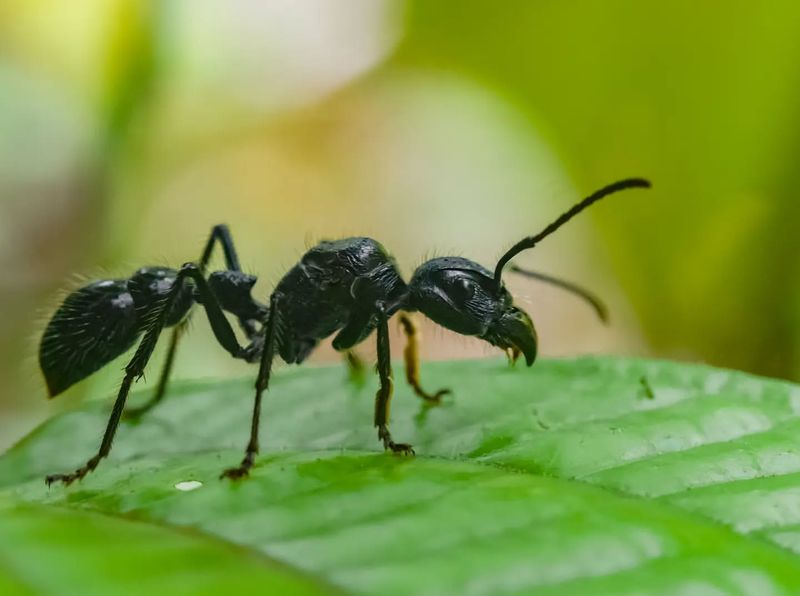
The bullet ant, named for its excruciating sting, is a notorious insect found in the rainforests of Central and South America. This ant’s sting is often described as one of the most painful insect bites known to humans, likened to being shot by a bullet.
Bullet ants are large, reaching up to an inch in length, and have powerful mandibles used for hunting and defense. They are social insects, living in colonies that can be fiercely protective of their nests.
While they are not aggressive by nature, bullet ants will defend themselves if threatened. Hikers and explorers should be cautious when traversing forests inhabited by these ants, as accidental encounters can lead to painful stings.
11. Caiman Lizard
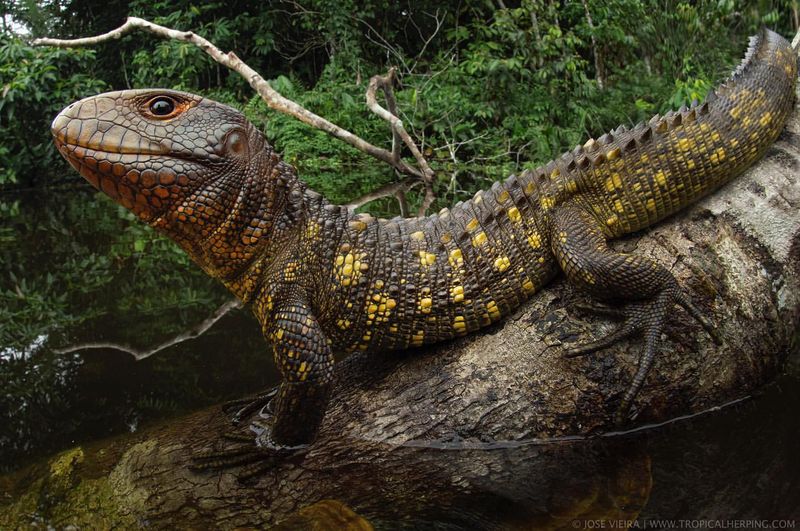
The caiman lizard, with its radiant scales and powerful build, is a striking reptile found in South America’s rainforests. Known for its vibrant colors, this lizard is a skilled swimmer, often seen basking near water bodies or climbing trees.
Caiman lizards feed primarily on aquatic snails, using their strong jaws to crack open shells. They are also known to consume fruits and insects, showcasing their adaptability in the diverse jungle environment.
Though they are not aggressive, caiman lizards can become defensive if cornered. Observing them in their natural habitat is a delightful experience, offering insights into their unique behaviors and adaptations.
12. Goliath Bird-Eating Spider
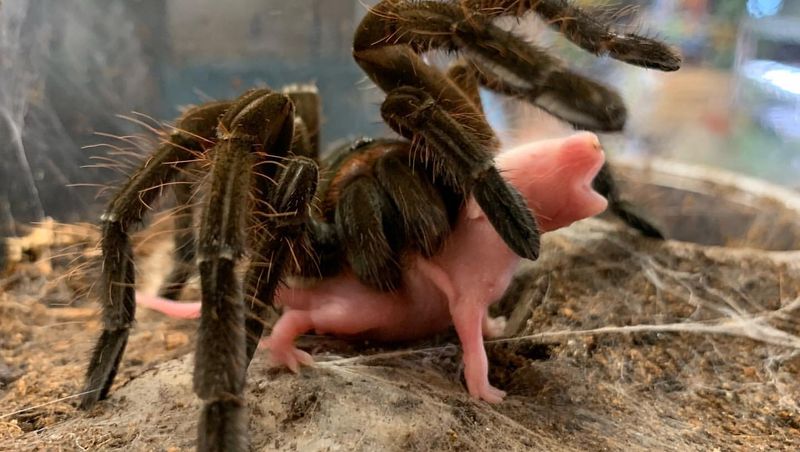
The Goliath bird-eating spider, the largest spider in the world by mass, is an intimidating resident of the Amazon rainforest. Despite its name, it rarely preys on birds, instead opting for insects, rodents, and amphibians.
With a leg span that can reach up to 11 inches, this spider is a remarkable sight. Its body is covered in hair-like structures that it can flick at predators as a defense mechanism, causing irritation to the skin and eyes.
Though its size and appearance might instill fear, the Goliath bird-eating spider is not deadly to humans.
However, its bite is painful and should be avoided. Appreciating this giant arachnid from a safe distance allows for admiration without risk, respecting its role as a top invertebrate predator.
13. Tapir
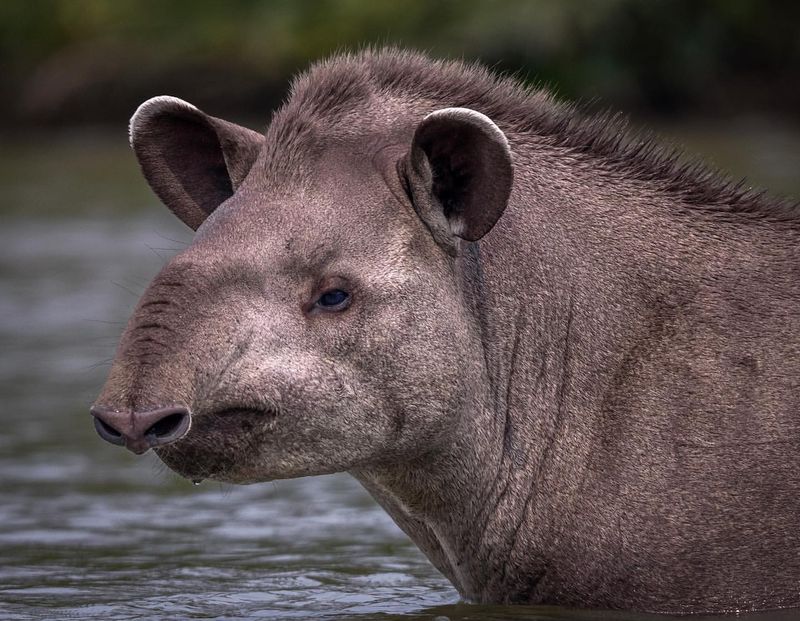
The tapir is a gentle giant of the jungle, known for its distinctive elongated snout and sturdy build. These herbivorous mammals play a crucial role in the ecosystem, aiding in seed dispersal as they forage through the underbrush.
Tapirs are primarily nocturnal, preferring to move quietly through the dense foliage at night. Despite their size, they are adept swimmers and often seek refuge in water to escape predators or cool off.
While tapirs are generally shy and avoid human contact, they can be aggressive if threatened. It’s essential to maintain a respectful distance to ensure their safety as well as your own.
14. King Cobra
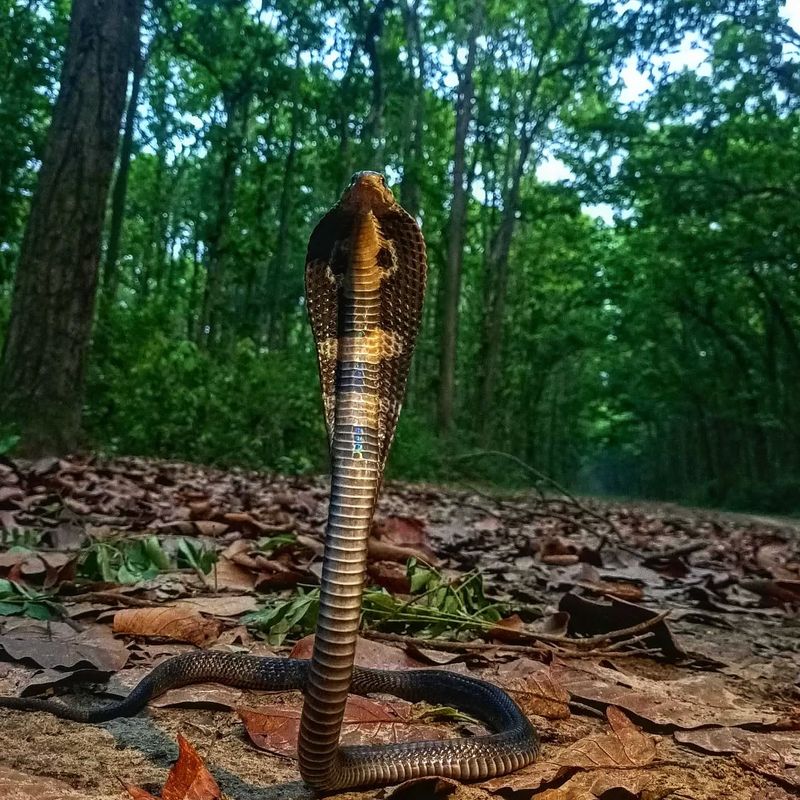
The king cobra, the world’s longest venomous snake, commands respect and awe within its jungle domain. Capable of reaching lengths of up to 18 feet, this snake is known for its potent venom and distinctive hooded appearance.
King cobras primarily feed on other snakes, including venomous ones, showcasing their dominance in the reptilian hierarchy. Their acute sense of smell and exceptional vision make them skilled hunters, often preying on rats and birds as well.
While undeniably intimidating, king cobras are not naturally aggressive toward humans.
These remarkable snakes prefer to avoid conflict, relying on their impressive size and hood display to discourage threats. Observing them from a safe distance allows you to admire their majesty without risking a defensive reaction.
15. Fire Ant
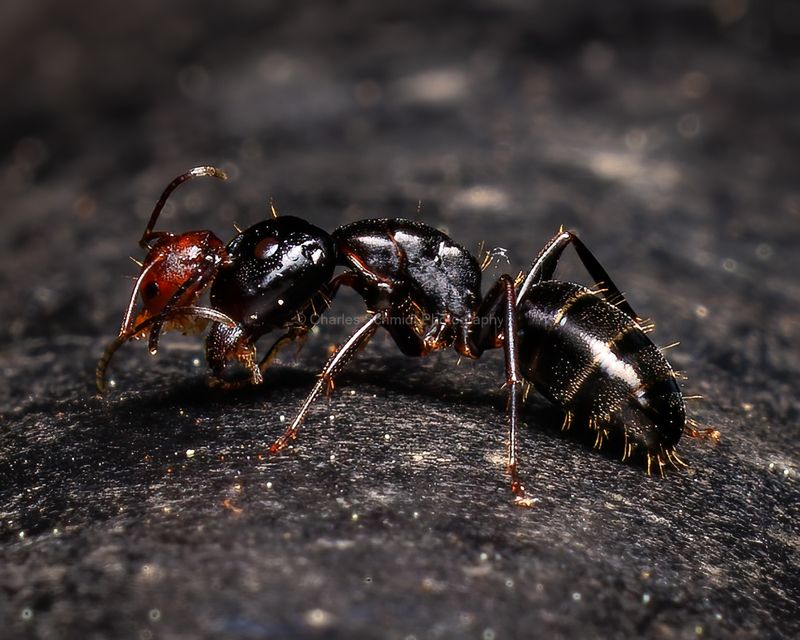
Fire ants, notorious for their aggressive nature and painful stings, are a formidable force in the jungle ecosystem. These small but mighty insects are known for their fiery red color and cooperative colony behavior.
Fire ants build large mounds that house their colonies, consisting of complex networks of tunnels and chambers. They forage for food collectively, often overwhelming larger prey with their numbers and coordinated attacks.
Though they are not typically dangerous to humans, their stings can cause severe allergic reactions in some individuals. When encountering fire ants in the wild, it’s best to steer clear of their mounds and avoid provoking them.
16. Green Moray Eel
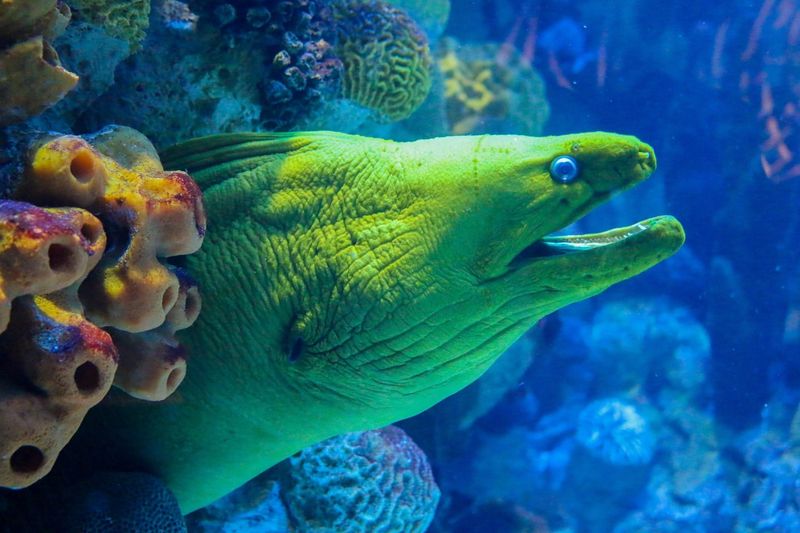
The green moray eel is a fascinating yet fearsome inhabitant of the jungle’s underwater ecosystems. Known for its elongated body and vibrant green color, this eel is a master of camouflage, blending seamlessly with its surroundings in coral reefs and rocky crevices.
These eels are nocturnal hunters, emerging at night to ambush prey such as fish, octopuses, and crustaceans. Their sharp teeth and powerful jaws make them efficient predators, capable of delivering a swift, deadly bite.
While they may appear menacing, green moray eels are generally not aggressive towards humans unless provoked. It’s important to be cautious when exploring their habitats, as disturbing them can lead to defensive behavior.
17. Piranha
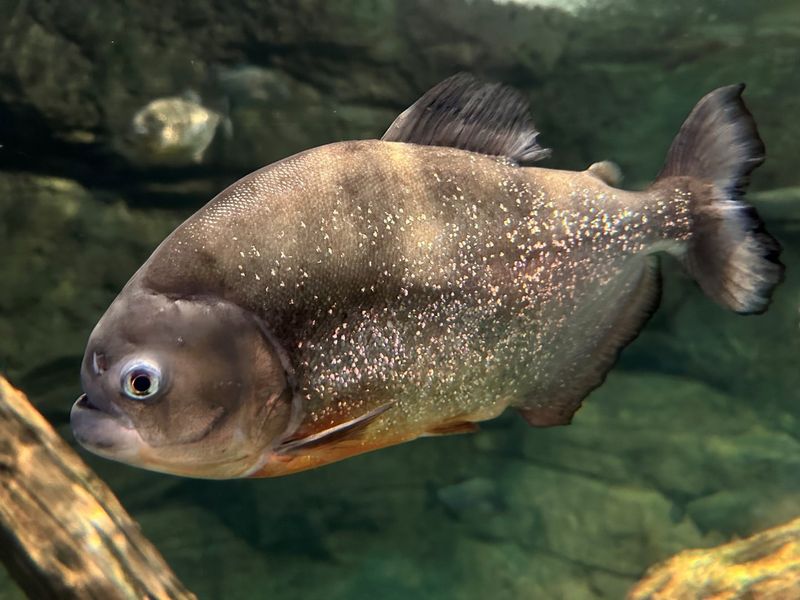
Piranhas, infamous for their sharp teeth and ferocious feeding frenzies, are a formidable presence in the rivers of the Amazon basin. These small to medium-sized fish have a reputation that precedes them, often depicted as ravenous predators that can strip flesh in moments.
In reality, piranhas are opportunistic feeders, and their feeding frenzies are typically triggered by environmental stressors like drought. Their diet mainly consists of fish, insects, and plants, making them essential to the river ecosystem as both predators and scavengers.
While piranhas are not typically dangerous to humans, they should be treated with respect. Swimming in waters inhabited by large schools of piranhas is not recommended, especially during periods of low water levels.
18. Electric Eel
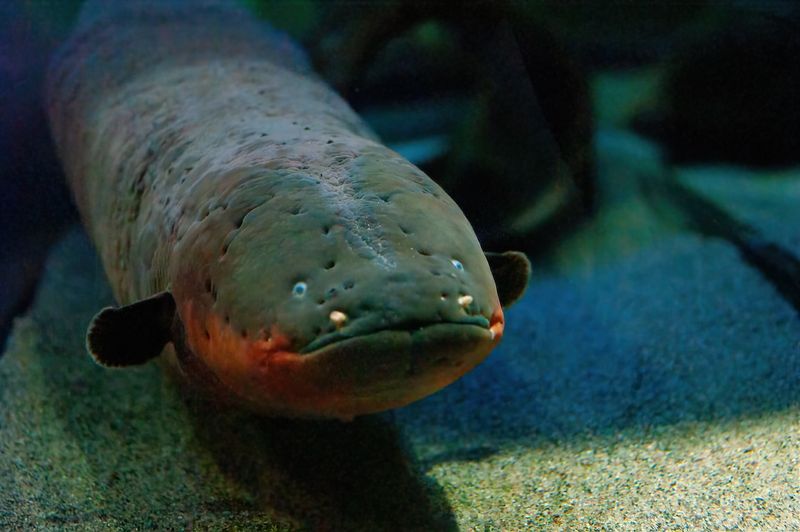
The electric eel, a powerful predator of the murky Amazon waters, is renowned for its ability to generate electricity. This eel-like fish is capable of producing electric shocks of up to 600 volts, which it uses for hunting and self-defense.
Electric eels are not true eels but belong to the knifefish family. They use their electric organs to navigate and communicate in the dark, turbid waters of their habitat. This ability makes them formidable hunters, as they can both stun prey and deter predators.
Though electric eels are not typically aggressive towards humans, their shocks can be dangerous. It’s crucial to exercise caution when exploring their habitats or conducting research.

